Safe Conduct pamphlets were used throughout World War II, in the European and the Pacific Theater. Prior to the United States involvement in World War II, the British, French, and Russians had already put Safe Conduct pamphlets to use, but they lacked consistency. This changed when the United States became involved.
The Safe Conduct Pamphlet aimed towards the Germans was also called a Passiercshein, which roughly translates to ‘pass’. The Passierschen on file is from later in the war, dropped 1944 between August and September. It was designed with an eye catching green front, with the same message in English and German. It read,
The German soldier who carries this safe-conduct is using it as a sign of his genuine wish to give himself up. He is to be disarmed, to be well looked after, to receive food and medical attention as required, and is to be removed from the danger zone as soon as possible.
Earlier Passiercshen also contained Dwight Eisenhower’s signature, but was removed from the later copies. The back side contained several quotes from the Geneva conventions as well as the conditions of the POW camps in America. Today, these Safe Conduct pamphlets are considered one of the most effective pamphlets of the World War II.
The museum thanks the Misbeck family for allowing us to keep copies of this pamphlet on file.
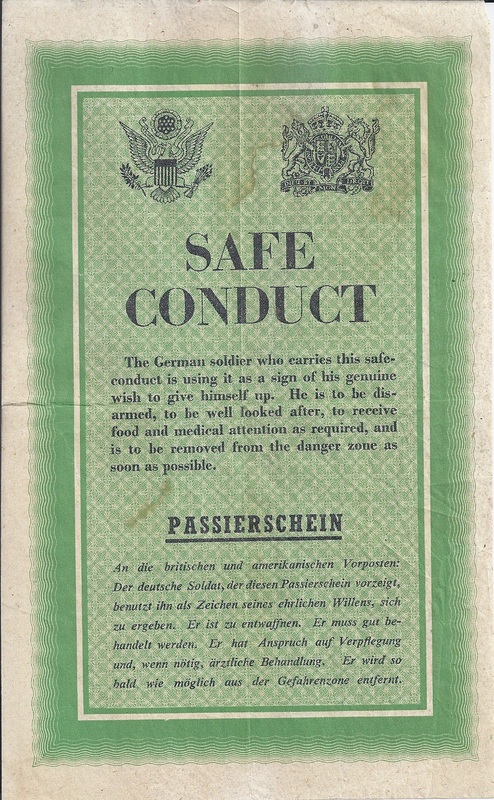
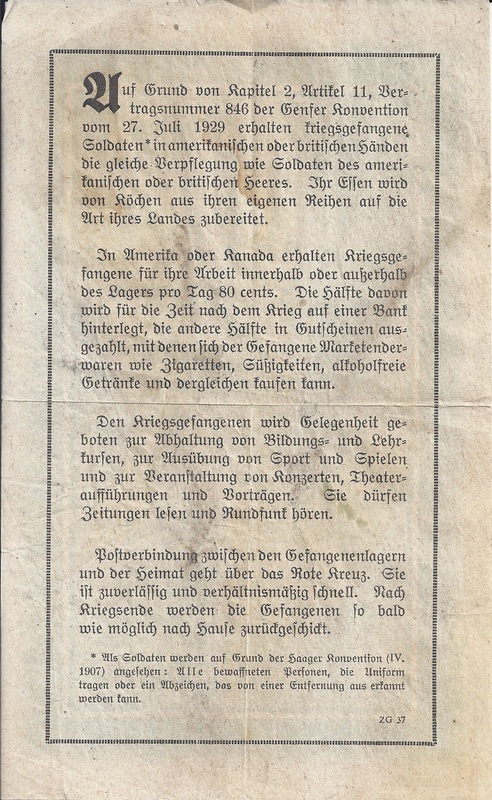
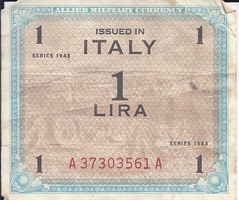
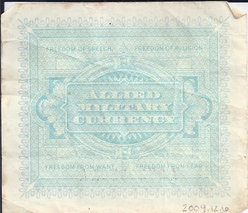
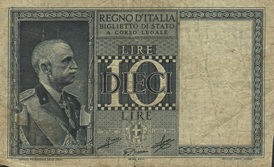
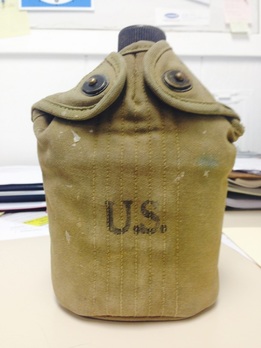
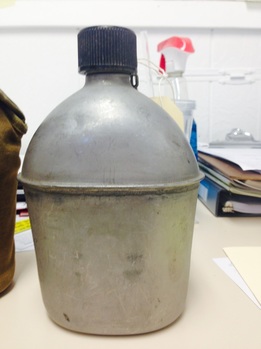
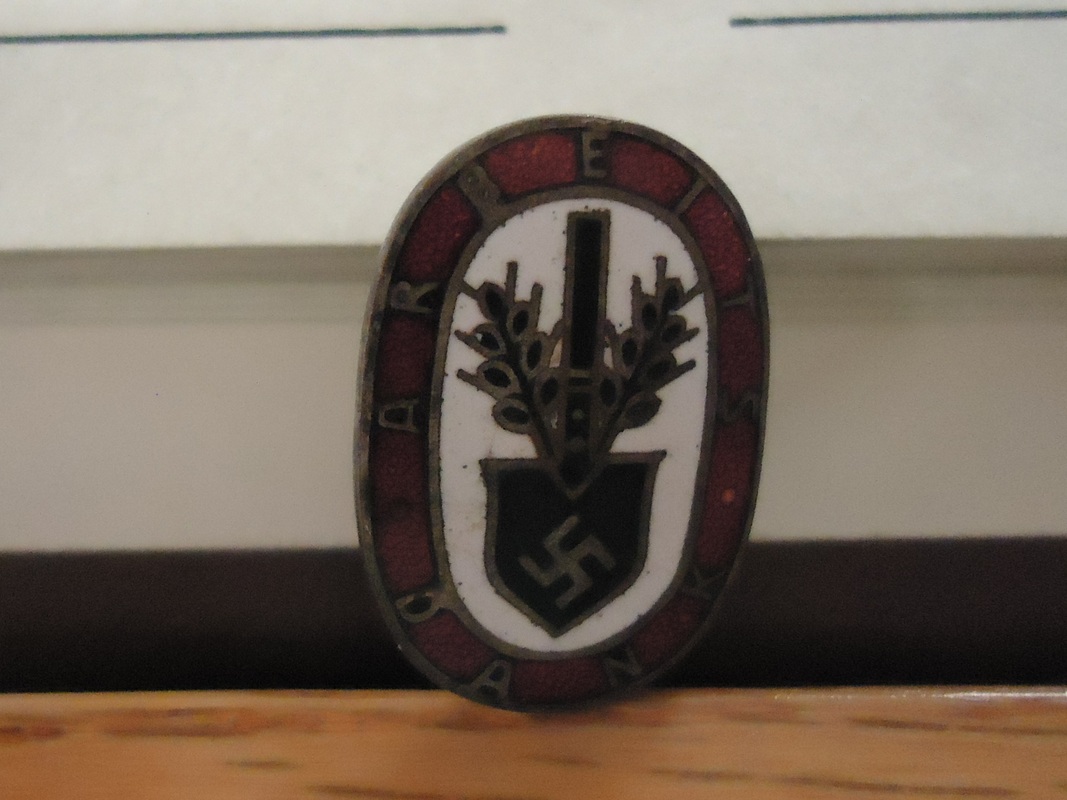
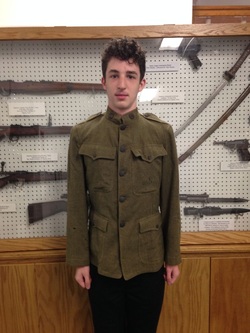
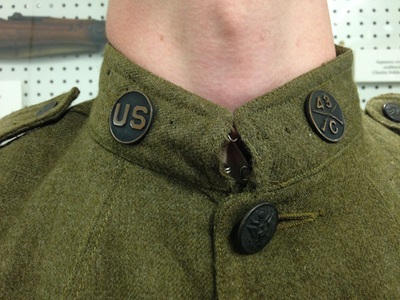
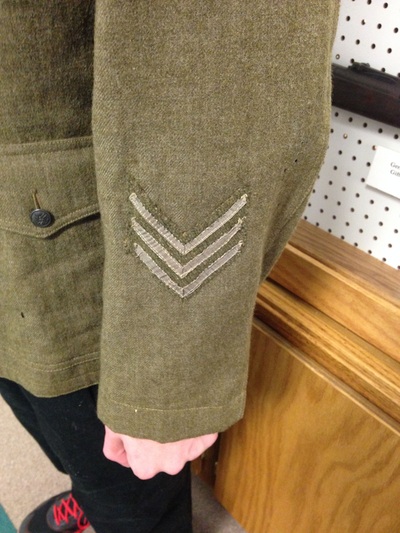
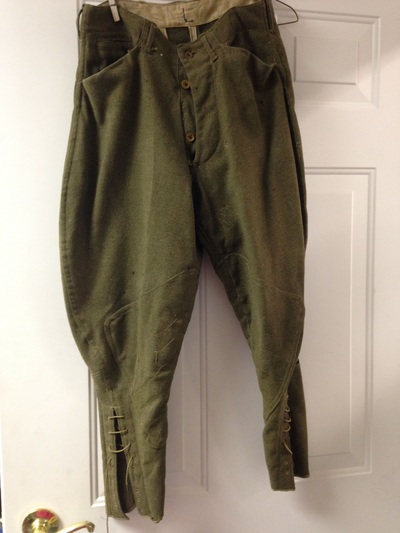
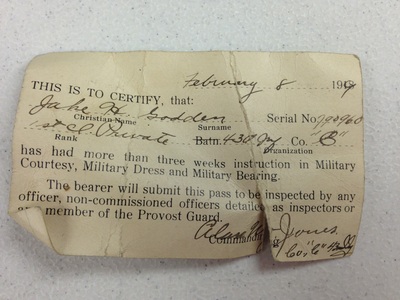
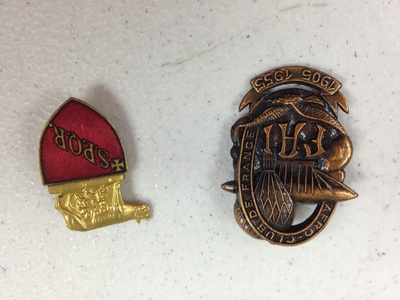
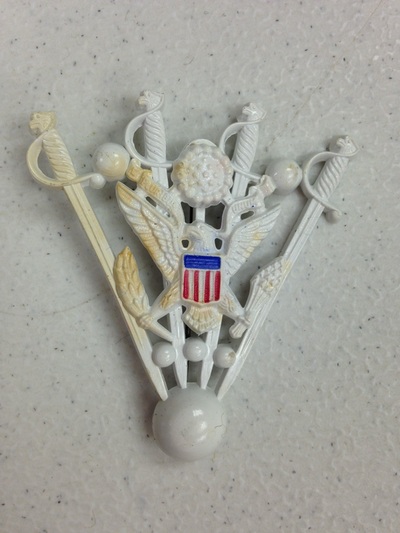
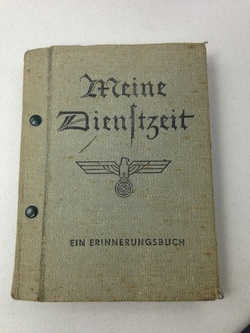
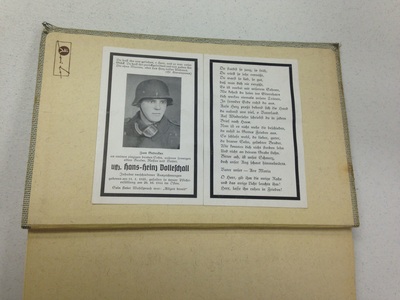
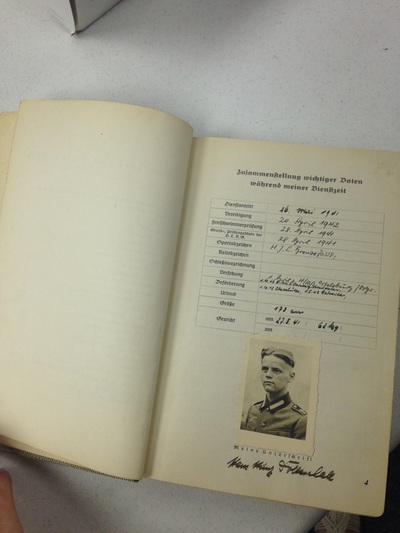
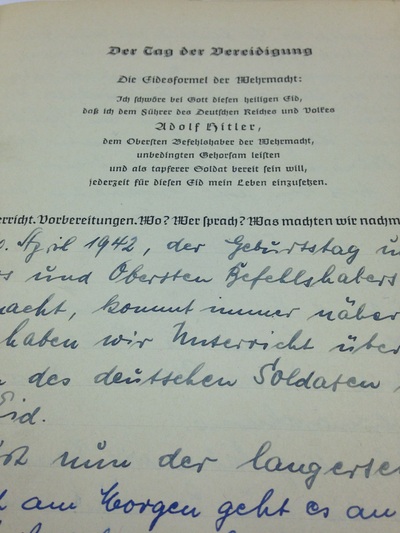
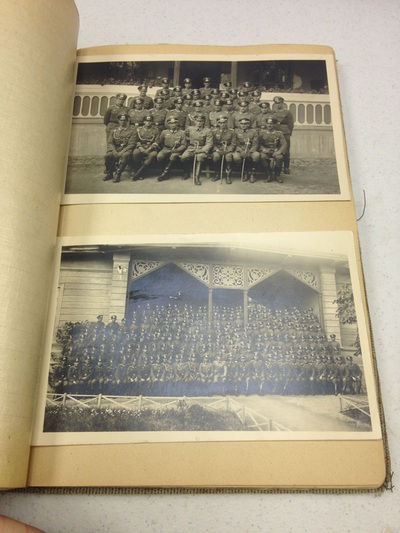
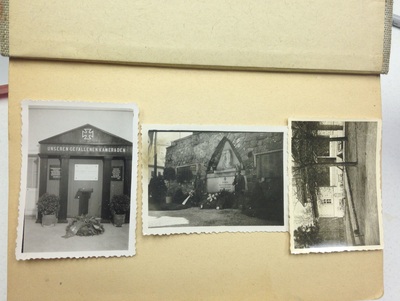
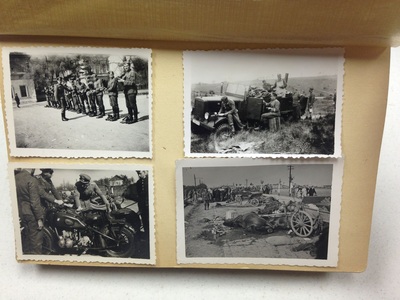
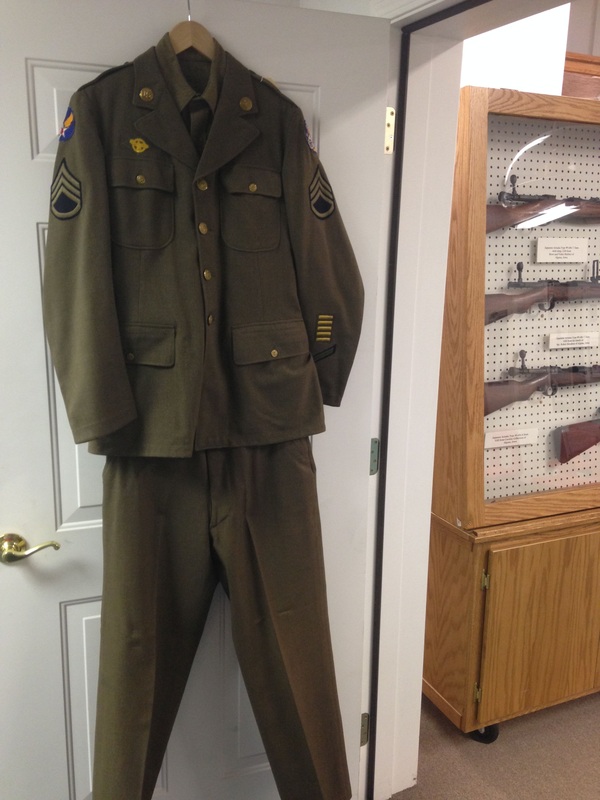
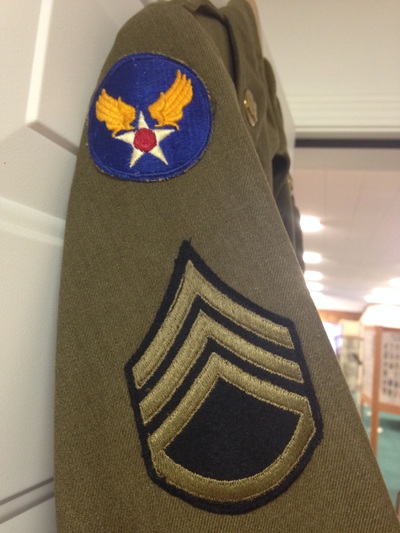
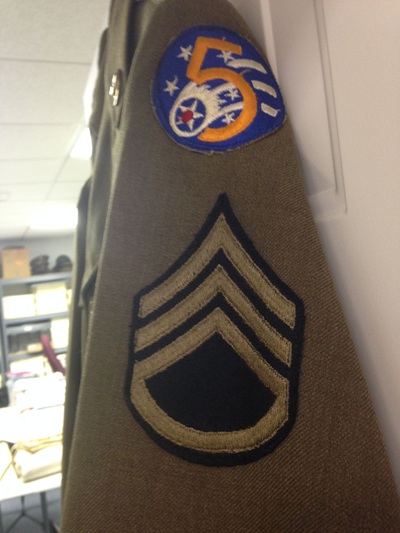
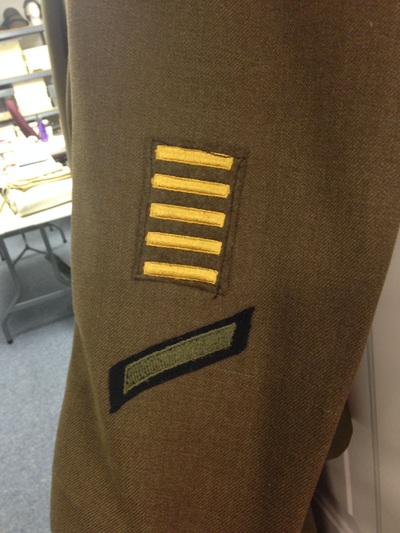
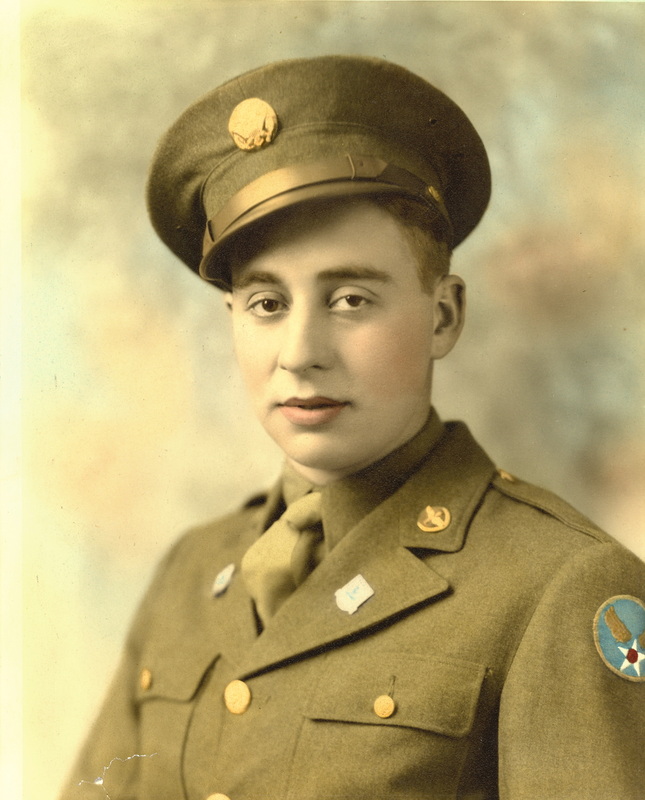
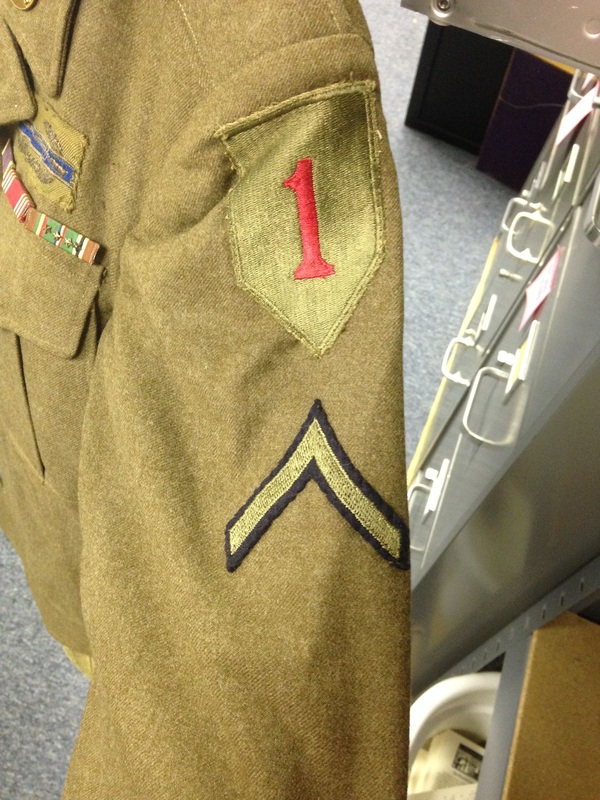
 RSS Feed
RSS Feed
